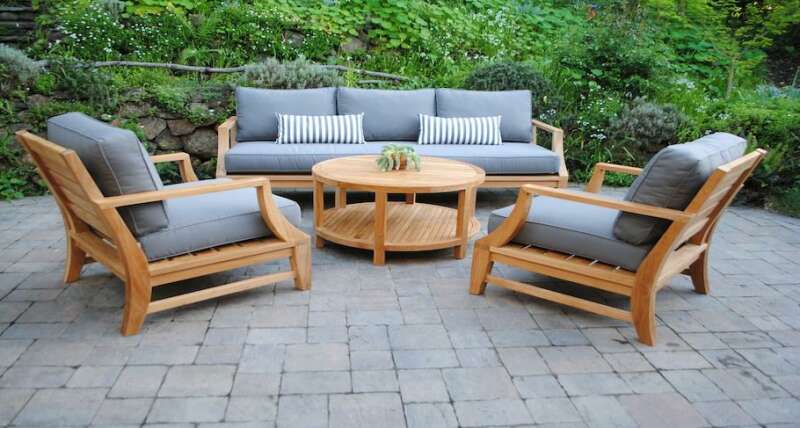Teak wood has been revered for centuries due to its exceptional qualities, making it a prized material in outdoor furniture design. From its origins in Southeast Asia to its global prominence today, the history of teak wood in outdoor furniture design is rich and fascinating.
Origins of Teak Wood
Teak wood (Tectona grandis) is native to the forests of Southeast Asia, particularly in countries like Indonesia, Myanmar, Thailand, and India. Its durability, natural resistance to termites and decay, and beautiful grain patterns have made it a popular choice for various applications, including shipbuilding, construction, and of course, furniture making.
Indonesia, in particular, has been a significant producer of teak wood for centuries. The country’s tropical climate and fertile soil provide optimal conditions for teak trees to thrive. Indonesian teak is highly sought after for its superior quality and rich color, making it a preferred choice for crafting exquisite furniture pieces.
Historical Significance
The history of teak wood in outdoor furniture design can be traced back to ancient civilizations in Southeast Asia. Historical records indicate that teak was used by the ancient kingdoms of Java and Bali for constructing temples, palaces, and ceremonial structures. The durability of teak made it ideal for enduring the tropical climate and frequent rainfall in the region.
During the colonial era, European powers recognized the value of teak wood and began extensive logging operations in Southeast Asia to meet the growing demand. The Dutch, in particular, established teak plantations in Java, further bolstering Indonesia’s reputation as a leading producer of teak wood.
Teak Wood in Modern Design
In the 20th century, teak wood gained widespread popularity in modern outdoor furniture design. Its natural resistance to moisture, insects, and decay, combined with its timeless aesthetic appeal, made it the perfect choice for gardens, patios, and outdoor spaces.
One of the most iconic examples of teak outdoor furniture design is the Adirondack chair. Originally crafted in the early 1900s by Thomas Lee, a vacationer in the Adirondack Mountains of New York, the Adirondack chair’s simple yet elegant design quickly became synonymous with leisure and relaxation. Today, many variations of the Adirondack chair are made from teak wood, offering durability and comfort for outdoor enthusiasts.
Indonesia’s prominence in the global furniture industry further solidified the country’s reputation as a leading producer of teak outdoor furniture. Indonesian artisans and craftsmen leverage traditional woodworking techniques passed down through generations to create exquisite pieces that showcase the natural beauty of teak wood.
The Future of Teak Outdoor Furniture
As environmental concerns continue to rise, sustainable forestry practices have become increasingly important in the teak industry. Organizations such as the Forest Stewardship Council (FSC) work to ensure that teak wood is harvested responsibly, preserving the integrity of forests and supporting local communities.
Moreover, advancements in technology and design have opened up new possibilities for teak outdoor furniture. From innovative shapes and configurations to eco-friendly finishes and coatings, designers are constantly pushing the boundaries of what is possible with this versatile material.
In conclusion, the history of teak wood in outdoor furniture design is a testament to its enduring appeal and remarkable qualities. From its origins in Southeast Asia to its global presence today, teak wood continues to captivate designers, craftsmen, and consumers alike with its timeless beauty and unparalleled durability.
Whether it’s a classic Adirondack chair or a contemporary dining set, teak outdoor furniture exemplifies the perfect blend of form and function, making it a cherished addition to any outdoor space.
Source:
